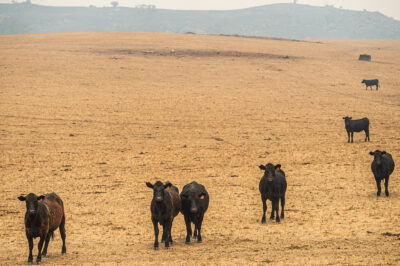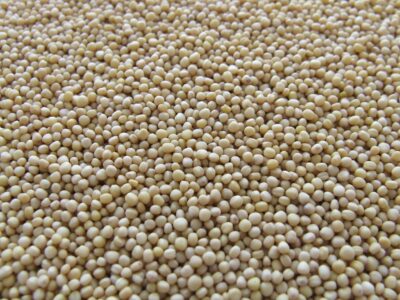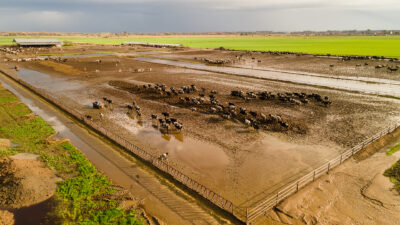Desertification is a process by which once-fertile land is gradually transformed into a wasteland unable to support vegetation or crops. While the term has been a subject of debate, it’s now understood to mean the degradation of soil in drylands — arid, semi-arid, and dry sub-humid regions. Though natural climatic variation plays a role, human activity is largely responsible for the widespread desertification that we have seen in recent history. Specifically, unsustainable agriculture has been the key driver in many areas that have undergone desertification.
WHAT IS DESERTIFICATION?
Desertification is the process by which land in dry areas that was once fertile loses its ability to support life, whether flora or fauna. One of the major contributors to desertification is agriculture — over-cultivation and overgrazing of farmed animals are two ways that agriculture contributes to desertification. Another cause of desertification is climate change, and the methods that we use to produce our food, and especially our animal-derived foods like meat, eggs and dairy, are also major contributors to climate change.
WHAT CAUSES DESERTIFICATION?
There are several factors that cause land to become degraded and move towards being desert. Desertification usually results from a combination of these factors, but even one acting in isolation can have severe consequences for the environment.
DEFORESTATION
Healthy forests play an important role in the water cycle, helping to generate rainfall. The trees in forests are capable of storing a large amount of water in their leaves and roots. They also play a key role in managing precipitation and evaporation. When forests are destroyed, the cycle is disrupted.
OVERGRAZING OF FARMED ANIMALS
Overgrazing is often one of the root causes of desertification, and has been a major factor in many specific instances worldwide. These include desertification in the rangelands of Pakistan, where now the only species able to survive are those well-adapted to living in drought conditions.
OVER-CULTIVATION OF CROPS
The need to feed the world’s growing population and the global taste for animal products have led to overcultivation. Repeatedly planting crops, especially the same crop, without providing a break for the soil to regenerate is considered over-cultivation and can result in desertification. In an effort to preserve the productivity of the land, fertilisers and pesticides are applied to the crops, which can in turn do further damage to the soil when used heavily.
INAPPROPRIATE IRRIGATION
Irrigating agricultural land with low-quality water can overburden the soil with salt, which negatively impacts its fertility. Less nutrient-rich soil means that less vegetation is likely to grow. When there is less vegetation in an area, the soil is then more susceptible to being swept away by wind or water.
GREENHOUSE GAS EMISSIONS
When greenhouse gases are released they trap heat close to the Earth’s surface, creating a warming effect. As the atmosphere heats up and weather patterns alter, desertification spreads. One way to think about this is via the number of people directly impacted. According to a report released by the Intergovernmental Panel on Climate Change (IPCC), at 1.5C of warming, 951 million people living on drylands are likely to be impacted by desertification. As the temperature rises, more people will feel the effects of desertification. Most of the people who will feel the worst effects of desertification are located in south Asia, central Asia, west Africa, and east Asia.
WHAT HAPPENS IN DESERTIFICATION?
SAND AND DUST STORMS
As land undergoes desertification and vegetation is lost, soil is exposed, increasing the likelihood of sand and dust storms. These storms often have severe impacts on the health and wellbeing of communities and individuals. For example, dust storms can seriously damage the lungs and worsen common ailments such as bronchitis and asthma.
LOSS OF FOOD SECURITY
The United Nations Convention on Desertification has made clear that continuing to degrade land and drive desertification will increase the number of people that experience food insecurity. For example, failing agricultural practices combined with severe droughts in 2014 led to a 30 per cent drop in production from Jamaican farms. In India, the loss of topsoil is a huge issue for an agricultural sector feeding an expanding population, and it’s been estimated that in 2014-2015 land degradation cost India 2.5 per cent of its GDP.
CHANGING VEGETATION
One of the primary aspects of desertification is that plant life cannot survive due to a loss of soil nutrients and erosion, and the pattern of vegetation alters as the land becomes less fertile.
WHAT IS AN EXAMPLE OF DESERTIFICATION?
Unfortunately, there are already numerous examples of land being made less fertile through desertification. Though the drivers of desertification for a particular area may differ, all of these lands have one thing in common: under human influence they have drifted towards becoming barren wastelands.
THE SAHEL
The Sahel region hugs the southern edge of the Sahara desert and, historically, has been characterised as a dry grassland. The region is being transformed into an extension of the Sahara, unable to support the crops that have long been grown there or the farmed animals who have grazed its landscape. This shift is largely due to human activity, as farmers overgraze the land and transition to growing cash crops that take more nutrients from the soil than traditional crops. Not providing the land with the opportunity to rest between crops also contributes to its desertification. Unsustainable farming practices have exacerbated the impacts of droughts in recent years. However, efforts to restore the Sahel are underway using a combination of literally groundbreaking technology and traditional farming techniques to bring life back to the land.
GOBI DESERT
The Gobi Desert stretches across more than one million square kilometres in China and Mongolia, but it continues to grow at an alarming rate. The desert claims roughly 6,000 sq km of space annually. A quarter of the land in China has already been degraded in some way, and the expansion of barren land is primarily driven by human activity, especially unsustainable agricultural practices. In response to the desert’s sprawl, China has launched the “Great Green Wall of China” initiative which has resulted in more than 60 billion trees being planted. The program has already helped reclaim tens of millions of hectares of eroded and degraded land.
INNER MONGOLIA
Inner Mongolia, also in China, is home to two deserts, the Mu Us desert and the Kubuqi desert. These deserts once went on as far as the eye could see without any vegetation. Today, thanks to careful planning, intense effort, and the cultivation of many potatoes, land is starting to be reclaimed.
SOUTH AMERICA
The main drivers of land degradation and desertification in South America are deforestation and overgrazing of farmed animals. The areas hardest hit by these include north-eastern Brazil, central Chile, and the areas that make up the Gran Chaco biome in northern Argentina, Paraguay, and Bolivia. South America accounts for 14 per cent of all degraded land globally. However, efforts are underway to protect and restore millions of hectares of land across the continent. In Chile, where 20 per cent of the land is at high or very high risk of desertification, the government launched their national plan for landscape restoration which includes the goal of restoring vast swathes of land in the next seven years.
HOW LONG DOES DESERTIFICATION TAKE?
Historically, desertification has taken decades or centuries to make large regions entirely barren. For example, the Sahara desert underwent major changes between 2000 BC and 1000 BC that helped to create the formidable landscape we know today.
In the last several decades, however, the process of desertification has been speeding up in large part due to human activity. According to the Food and Agriculture Organization of the United Nations, 12 million hectares of land are degraded every single year. This equates to 23 hectares every minute. Unsustainable agricultural practices are one of the major drivers of this degradation, including desertification.
HOW TO REVERSE DESERTIFICATION
Desertification has already impacted millions of people and ravaged vast areas of land. However, there is still hope, as desertification is reversible. There are several methods that can be used to shore up the soil, improving its structure and fertility. Stopping the spread of barren land is a shared responsibility in which we all have a part to play.
REFORESTATION
Reforestation is a tactic that has been successfully implemented to combat desertification. Both China and the African Union have implemented “Great Green Walls”, reintroducing vegetation to degraded lands and helping to halt the further advance of deserts.
SOIL RESTORATION
Desertification takes place when land becomes less able to support life. One of the key factors in supporting life is soil health, including its structure, nutrients, and moisture retention. Protecting and restoring soil through removing harmful chemicals, adding natural nutrients, and reintroducing plants with roots to anchor the soil are essential steps towards reclaiming land.
DESERT RECLAMATION
The efforts to reclaim deserts have spanned borders, techniques, and interest groups. One commonly cited success story is that of China’s Kubuqi desert. The desert reclamation project was initially spearheaded by a private business owner who incentivised those still living in the desert to plant and maintain trees and other plants.
MANAGED GRAZING
Carefully controlled grazing of farmed animals on land that has experienced desertification is one solution often proposed to combat the spread of deserts. However, animal agriculture has severe environmental consequences, with cows producing significant greenhouse gas emissions. Greenhouse gases and climate change are one of the causes of desertification in the first place, calling into question the validity of raising animals as a means of combating the problem.
CONCLUSION
Even if we do not reside in an area directly experiencing desertification, the issue impacts all of us. Desertification entails the loss of trees and other vegetation, decreases the productivity of the land, increases the number of people experiencing food insecurity, and increases the frequency of sandstorms. We all have a responsibility to stop the destruction of our planet.





